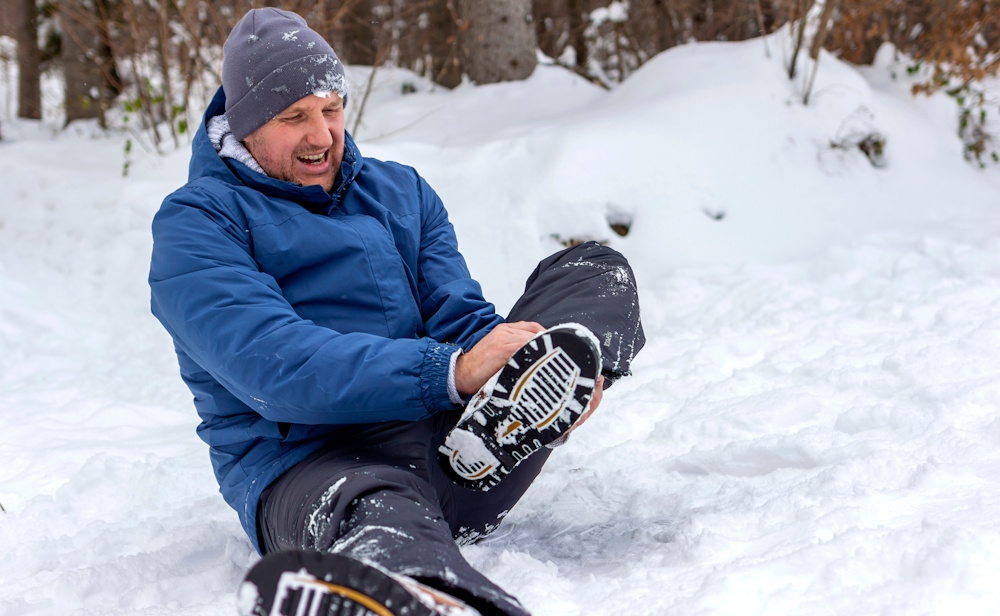
Shot of a young male feeling the pain of a strained muscle. Cropped shot of an unhappy man sitting on the cold snowy road with an ankle injury. Photo of young man experience ankle pain. Health concept
Ankle injuries are common in activities that involve quick directional changes and uneven surfaces. Injuries can range from mild sprains to more severe fractures, affecting ligaments, tendons, and bones. Winter sports, such as skiing, snowboarding, and ice skating, present unique risks to the ankle joint. Here are some tips to prevent an ankle injury during winter sports:
Wear the Right Equipment
Choosing and using the right gear is a key step in preventing an ankle injury. For sports like skiing and snowboarding, boots are your primary source of support. A proper fit means the boot is snug but does not cut off circulation or cause painful pressure points. Your heel should stay locked in place to provide stability and control. Ill-fitting boots may allow your foot to move too much, which increases the likelihood of twisting an ankle. In sports like ice skating, skates must be laced tightly to support the ankle joint. You may also use ankle braces or supportive taping if you have a history of ankle instability, which offers additional protection.
Use Proper Technique
How you move your body impacts joint health. Many ankle injuries happen when an athlete loses balance or lands awkwardly from a jump. Taking lessons from a qualified instructor will help you learn the correct form and body mechanics for your chosen sport. An instructor can show you how to maintain your balance, fall safely, and execute movements in a way that minimizes stress on your joints. Gradual progression is also part of proper technique. Attempting advanced maneuvers before you have mastered the basics places unnecessary strain on your body and elevates your risk of injury.
Know When to Stop
Pushing your body beyond its limits is a frequent cause of injury. Fatigue can impair your coordination and judgment, making you more susceptible to mistakes and falls. Listen to your body and recognize the signs of tiredness, such as muscle soreness, slower reflexes, or a decline in performance.
Taking regular breaks throughout your activity allows your muscles to recover. Environmental conditions also play a role; poor visibility or icy terrain increases the difficulty and risk of any winter sport. Recognizing when conditions are too hazardous is a smart way to avoid injury.
Take Precautions
Beyond your equipment and technique, additional preparations can help safeguard your ankles. Warming up before you start any activity increases blood flow to your muscles and prepares them for exercise. A good warm-up includes light aerobic activity followed by dynamic stretches, such as leg swings and ankle circles.
Strengthening the muscles around your ankle also provides better natural support for the joint. Exercises such as calf raises, ankle rotations, and balance training can help build stability. After your activity, a cool-down period with gentle stretching helps your muscles recover. Staying hydrated and maintaining good nutrition also supports overall physical resilience.
Treat an Ankle Injury Today
Even with precautions, injuries can happen. If you experience pain, swelling, or are unable to bear weight on your ankle, stop your activity immediately. Pushing through the pain can worsen the injury and prolong your recovery. A medical professional can diagnose your injury and create a treatment plan to help you heal correctly. Contact a foot and ankle specialist today for a professional evaluation if you suspect an ankle injury.





